[Event Report] Taipower - LCI Workshop Series 10: Floating Wind Policy and Technology Workshop 浮式風力政策暨技術工作坊活動報導
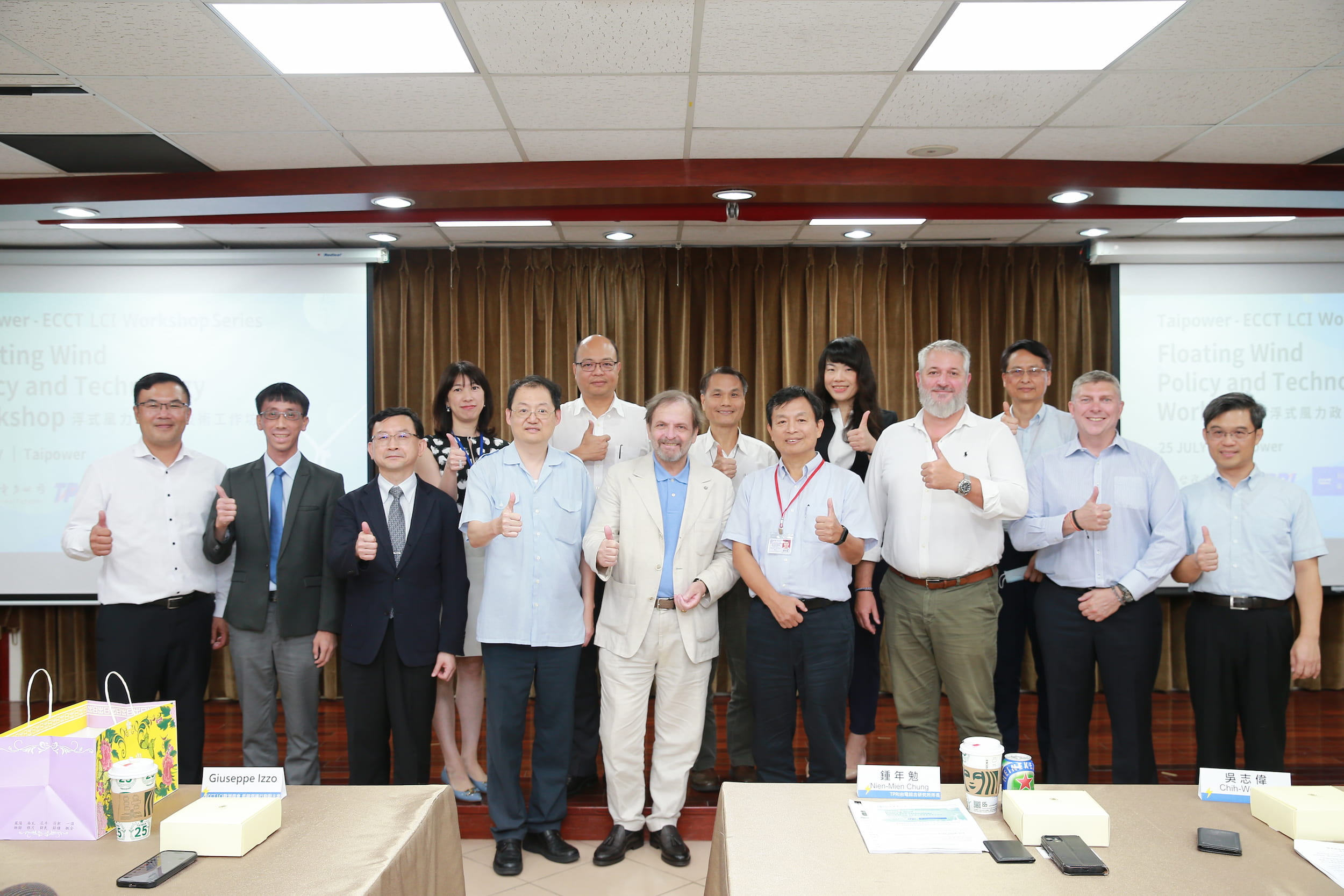
Photo Gallery: Facebook / LinkedIn
Event Review Video: LCI
The ECCT’s Low Carbon Initiative (LCI), was a co-organiser of the 2023 “Floating Wind Policy and Technology Workshop'' along with Taipower Research Institute (台灣電力公司綜合研究所) for the second time this year and 10th in this series. The event took place at TPRI on July 25 and began with opening remarks by MOEA Counselor Wu Chih-Wei (經濟部參事 吳志偉), ECCT LCI Vice Chair Giuseppe Izzo (歐洲商會-低碳倡議行動副主席 尹容), and TPRI General Manager Dr. Chung Nien-Mien (台電綜合研究所所長 鍾年勉).
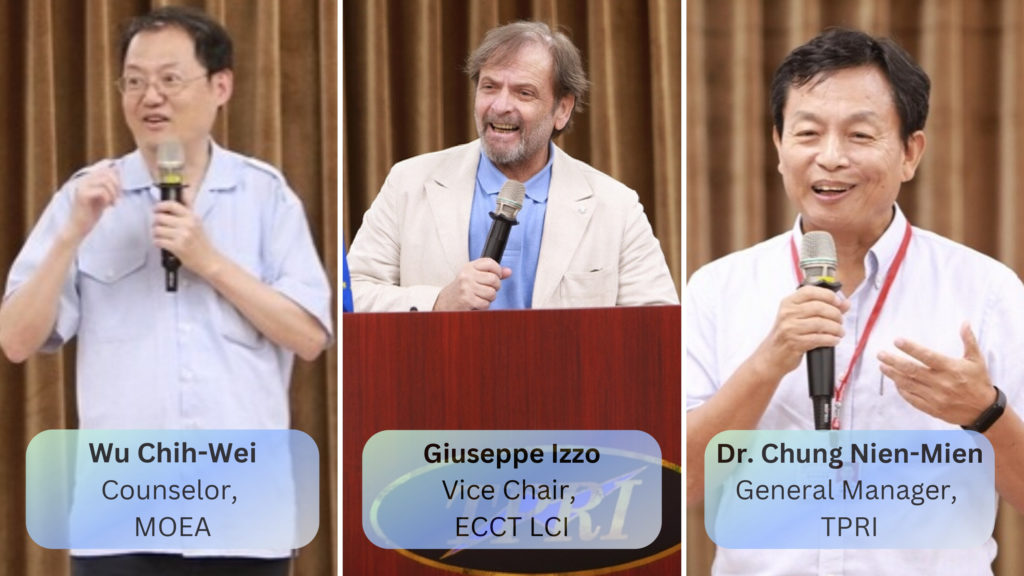
The Taipower workshop brought together 6 speakers from both the government and industry to discuss the possibilities and challenges associated with floating wind energy. One of the key topics explored was the significant growth potential of floating platforms, which can be installed in deep water far from the shore. The discussions also focused on various issues concerning floating offshore wind energy policies and technologies.
While floating offshore wind energy is still in its infancy, it has enormous potential for growth given the fact that floating platforms can be installed far from shore in deep water. The 2022 Global Wind Energy Council (GWEC) annual report projects that there will be 180GW of installed global floating offshore wind capacity by 2050, comprising close to 13,000 floating turbine units. Floating wind will also be essential if Taiwan is to reach its offshore wind capacity targets of 20GW by 2035 and 40-55GW by 2050. However, there are a number of challenges to overcome before the floating wind can really take off, including having in place the right policy and regulatory framework.
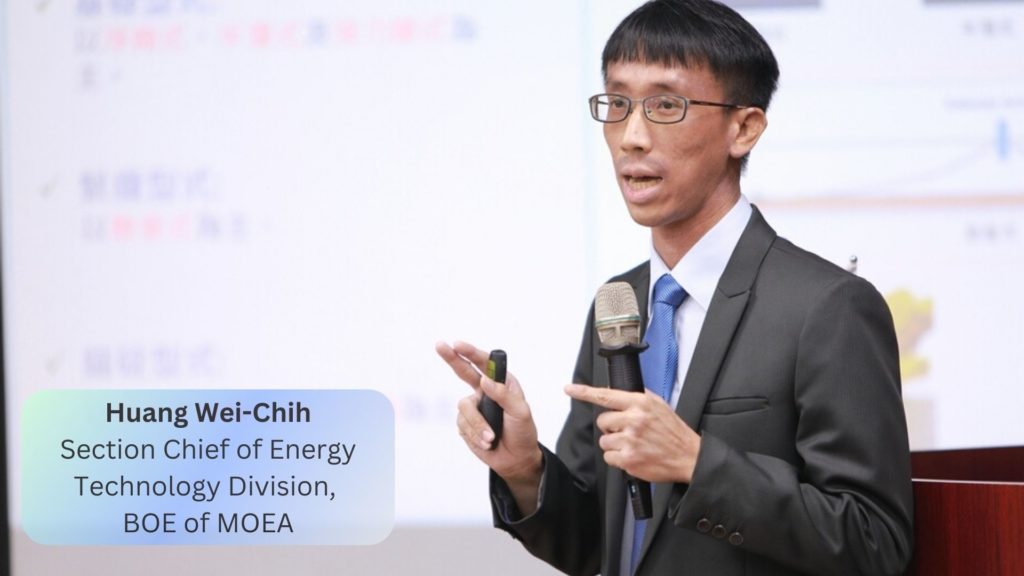
Following the opening remarks, Section Chief of the Energy Technology Division of the Bureau of Energy Huang Wei-Chih (經濟部能源局能源技術組科長 黃韋智) spoke about the update of Taiwan Floating Wind Demonstration Project Policy. The Ministry of Economic Affairs (MOEA) is currently developing and has already released a draft proposal for a floating demonstration project. The MOEA seeks to continue to gather input from all parties and make suggestions regarding the capacity and completion and connection schedule of the floating demonstration wind farm consideration to promote Taiwan's floating demonstration project.
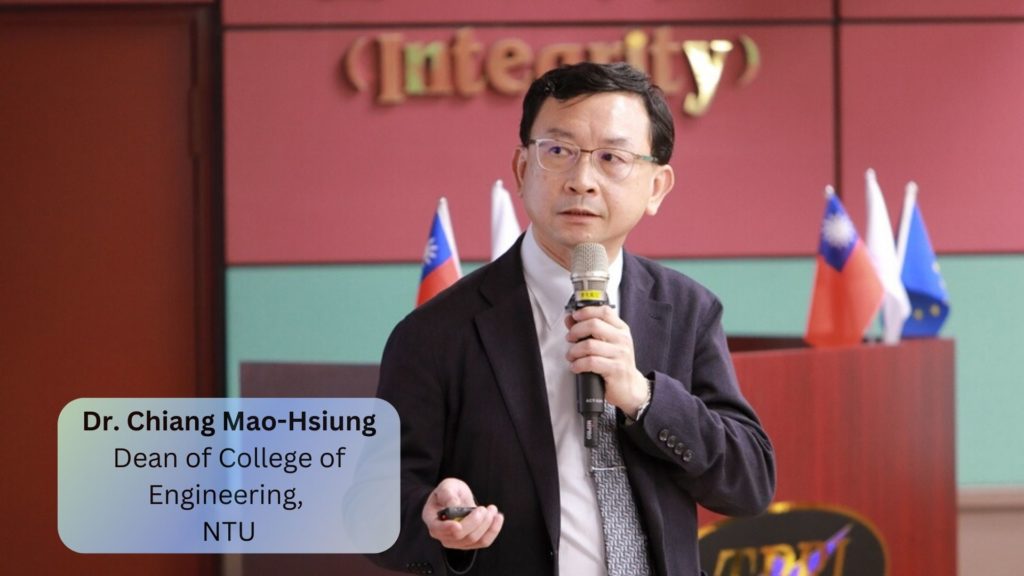
For the second speaker, Dr. Chiang Mao-Hsiung, Dean of the College of Engineering of Taiwan National University (台灣國立大學工學院院長 江茂雄博士 ) talked about Outlook and Current Development of Floating Offshore Wind Technology. Through his report, we learned about the testing phase of floating wind turbines NTU is now operating and the comparison with the other APAC countries. He also showed the simulation analysis results of 5MW offshore wind turbines and 10MW turbines. Dr. Chiang mentioned that the Floating Offshore Wind Turbines (FOWT) Demonstration Project in Taiwan is composed of 3 essential constituents: Regulations, Technologies, and Infrastructure. Also, NTU is long time devoted to cultivating professional personnel in floating wind technology.
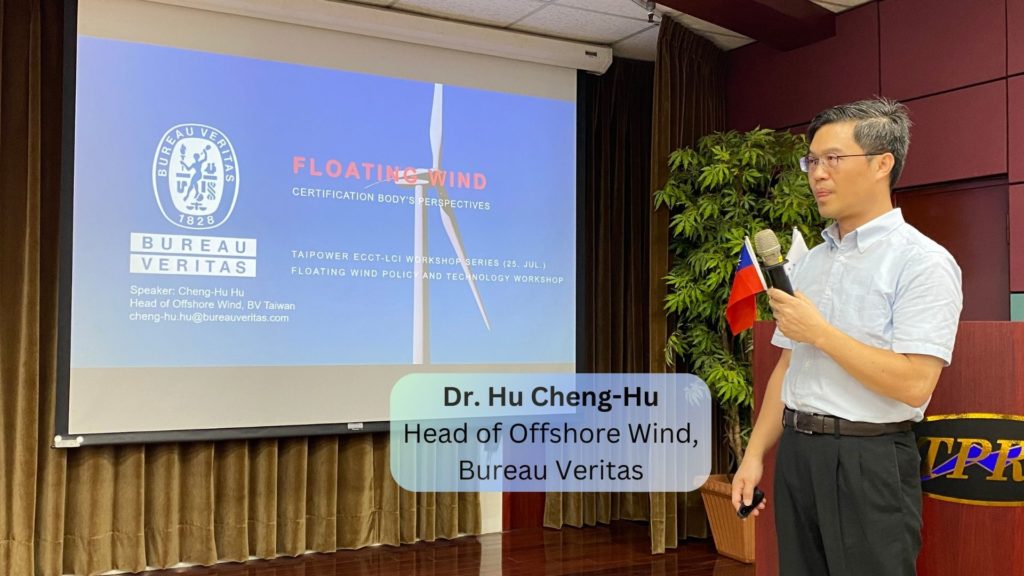
Next, Dr. Hu Cheng-Hu, Head of Offshore Wind from Bureau Veritas Taiwan Branch (法商法立德公證有限公司台灣分公司風電負責人 胡承祜博士), illustrated 2 terms in the certification body’s perspectives: those are certification and classification. Dr. Hu also brought out one of the main obstacles in developing Floating Wind Technology which is the maintenance of turbines. In other words, pulling back the turbines back to the ports might cause a tremendous loss of energy production during the maintenance which can last 3 months to a half of the year. However, the maintenance directly conducted in wind farms requires technologies that are yet to be overcome by the developers.
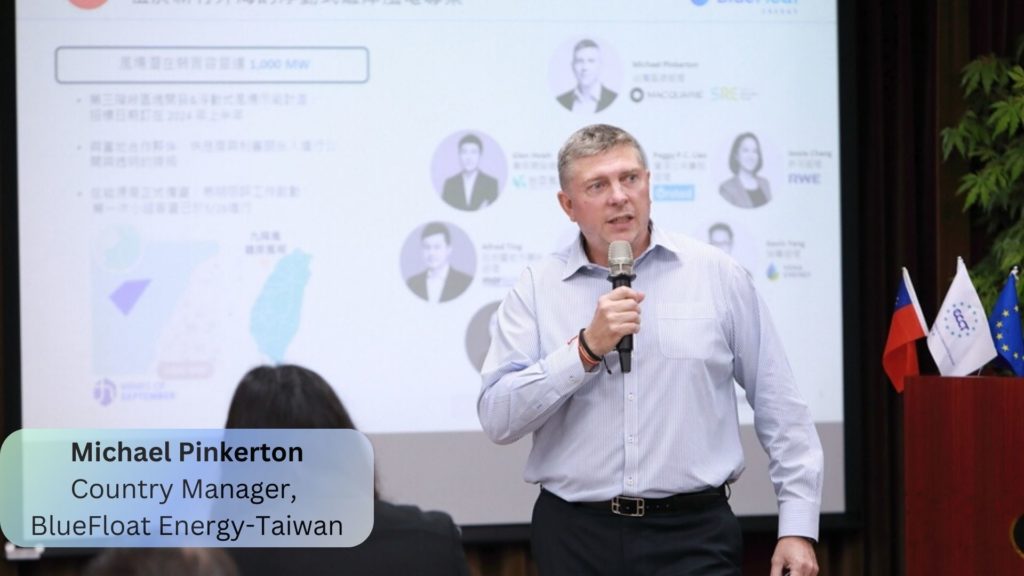
As the first speaker after the networking break, Michael Pinkerton, Country Manager of BlueFloat Energy-Taiwan (貝富新能源台灣區總經理 彭茂寬) resumed the second session of the forum by speaking Unlocking Floating Wind Opportunity in Taiwan. The “Winds of September” project located in Hsinchu is expected to provide up to 1GW of energy and BlueFloat expects to achieve 20.5GW of energy by 2035(fixed-bottom platform + floating platform) and the different material requirements for these two types of platform.
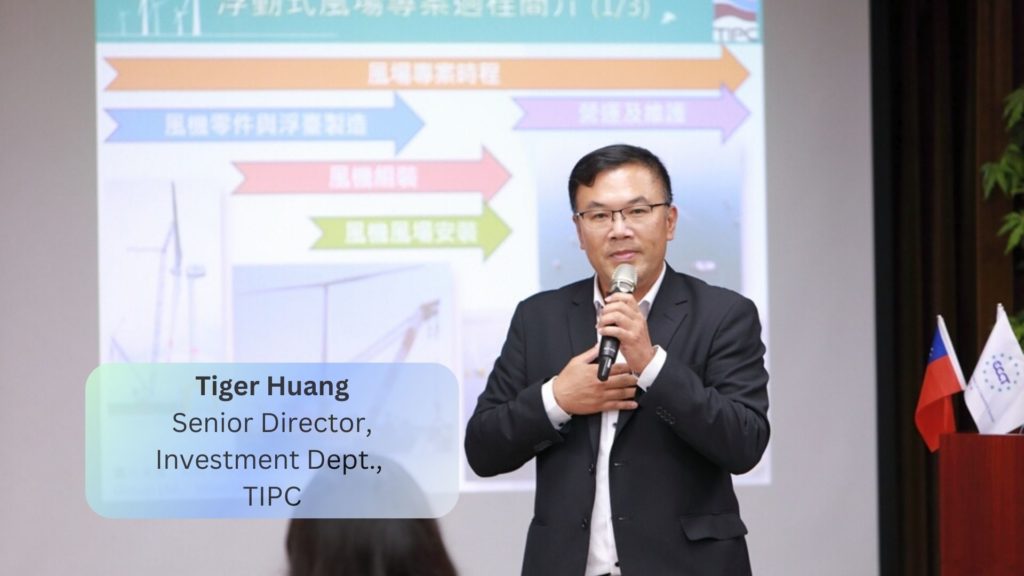
As the fifth speaker of the day, Tiger Huang, Senior Director of the Investment Dept. of Taiwan Int’l Ports Corp. (TIPC) (臺灣港務公司投資事業處資深處長 黃一民) spoke about Port Requirements and Current Planning for the Development of Floating Offshore Wind in Taiwan. Instead of building a brand new port for floating offshore wind turbine assembling, TIPC is planning to clear an area of Taichung Port and the South Terminal area of Taipei Port for the use of the floating offshore wind turbine.
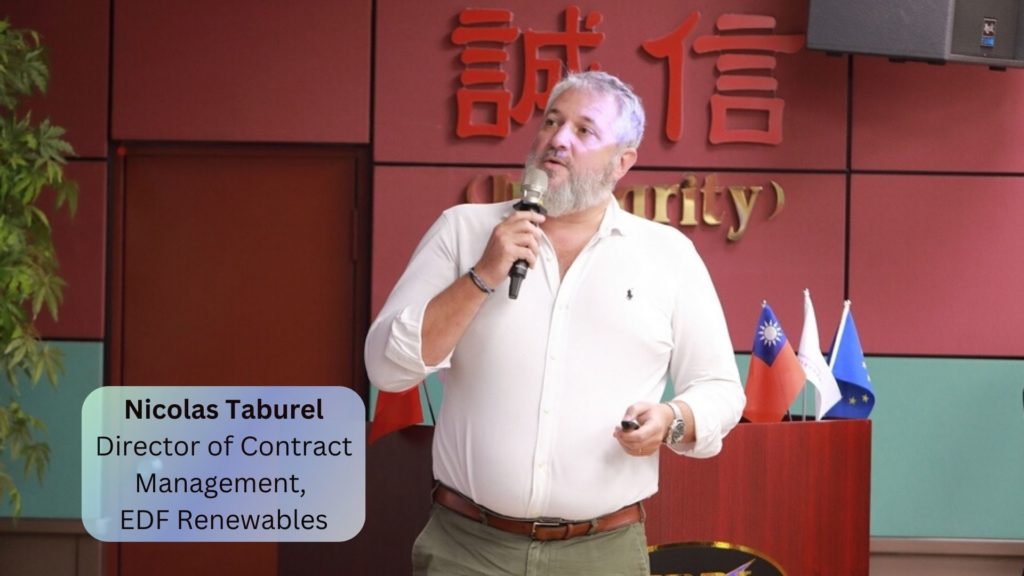
The last speaker of the day, we’ve invited Nicolas Taburel, Director of Contract Management from EDF Renewables to talk about the outlook of Offshore Wind Development in Asia Pacific in 2035. He introduced first the Provence Grand Large (PGL) project in France, which is a floating wind pilot project of three 8.4MW turbines launched in 2011. The EDF Renewables team showed that they have several successful projects all around the world and looking forward to the potential of Taiwan can develop floating wind energy. The suggestions EDF Renewables gave to Taiwan are the communication among the community and the coordination between developers and the government in terms of regulation and financing.
 Panel Discussion with all the Guest Speakers
Panel Discussion with all the Guest Speakers
